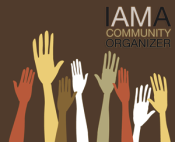
by L.N. Rock
According to the American Diabetes Association, African Americans are disproportionately affected by diabetes as 3.7 million or 14.7 percent of all African Americans aged 20 years or older have diabetes. In addition:
-African Americans are 1.8 times more likely to have diabetes as non Hispanic whites
-25 percent of African Americans between the ages of 65 and 74 have diabetes.
-1 in 4 African American women over 55 years of age has diabetes.
The American Diabetes Association (the Association) is a not-for-profit voluntary health agency that works to prevent and cure diabetes and to improve the lives of all people affected by diabetes. In October 1994, the Association’s Board of Directors established the American Diabetes Association Research Foundation, Inc. (the Foundation), as a subsidiary of the Association. The objective of the Foundation is to fund diabetes-related research leading to the prevention and cure of diabetes, the prevention and cure of the complications of diabetes, and new and improved therapies for individuals affected by diabetes.
Get this, the Foundation is exempt from income taxes under Section 501(c)(3) of the Internal Revenue Code (the Code) and charitable contributions to the Foundation qualify for charitable tax deductions as described in the code. The Foundation has been classified as an organization that is not a private foundation under Section 509(a) of the code. Even though they appear to have a bias against HBCU’s and black researchers. More on this later…
Research grants awarded by the Foundation generally extend over a period of one to three years, subject to renewal on an annual basis.
Upon investigation and review of the financial reports and records, this writer has found that Historically Black Colleges and Universities have been totally left out of the American Diabetes Association Research Foundation, Inc ward process as selected grantees.
Compared to the general population, African American researchers and HBCU’s are not receiving grant research dollars from the American Diabetes Association Research Foundation.
As an example, the Foundation provided over $33 million in research grants in 2010 without one gong to a HBCU. If one looks at their annual reports for ADA 2009 Research Foundation Financials and 2009 IRS Form 990 you will see the same challenge in the 2008 IRS Form 990, (check out the grantee database for information on ADA-funded research grant awardees), 2007 IRS Form 990 and 2006 IRS Form 990, no black awardees, no HBCU’s researchers
In other words the American Diabetes Association Research Foundation, Inc has not awarded not one research grant to HBCUs, even with the high incidence of black Americans with diabetes.
It is clear to this writer that the American Diabetes Association Research Foundation is saying that it has no interest in developing a strong research relationship with HBCU’s in relationship to issues of research related to the prevention and cure of diabetes, the prevention and cure of the complications of diabetes, and the development of new and improved therapies for individuals affected by diabetes.”
Although the ADA Research Foundation asks Americans to make a donation to the American Diabetes Association to help fund leading-edge research that affects the health and well-being of millions of people living with diabetes. It’s clear that funds are being awarded to friends and pals of the Board of ADA, and HBCU’s are being left out of the grant awards.
This should be no surprise. Rob Stein over at The Washington Post just reported on how Black scientists are significantly less likely than white researchers to win grants from the National Institutes of Health, according to an audit released Thursday that confirmed disturbing suspicions inside the agency about a lingering bias against African Americans.
Who said education is the great equalizer? When it comes to color aroused bigotry, it makes no difference if it’s NIH or the American Diabetes Association Foundation; color continues to play a factor in the way we address research of diseases in this country, particularly as it relates to African Americans.
It’s too bad for America, too bad for those with diabetes, and too bad for HBCU’s and black researchers.
L. N. Rock is a management consultant, Democratic strategist, and 2008 credentialed blogger at the Democratic National Convention. He blogs at African American Pundit.



